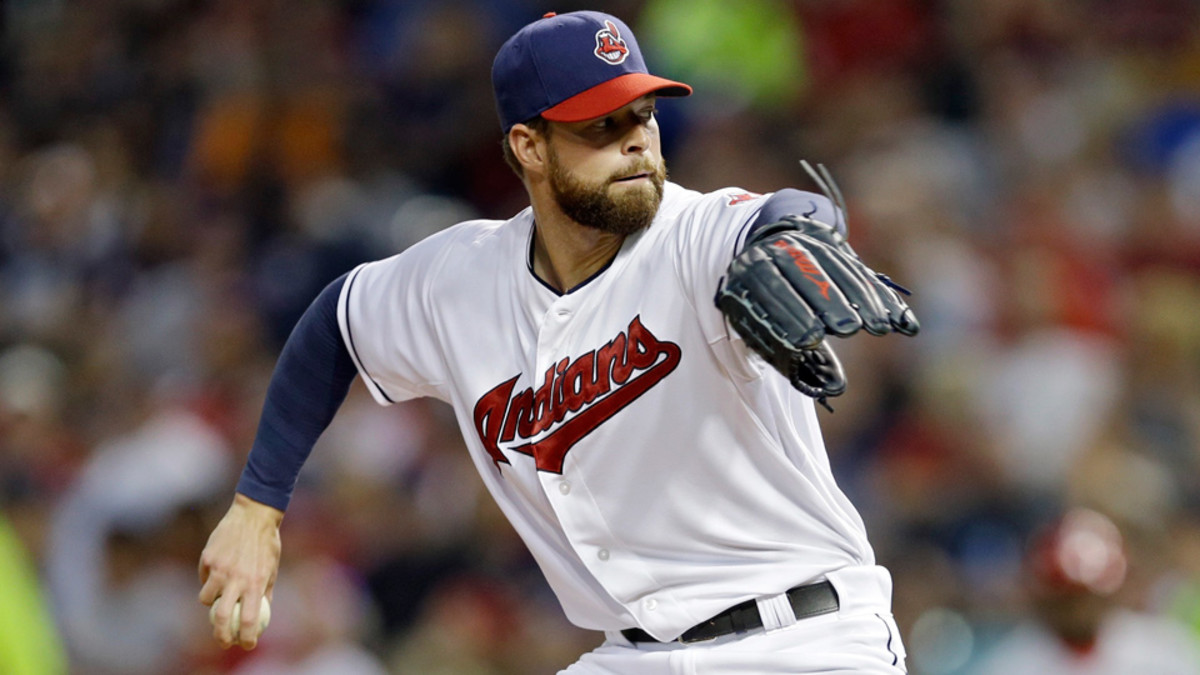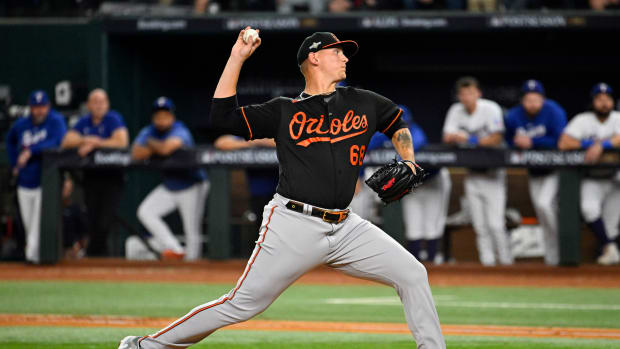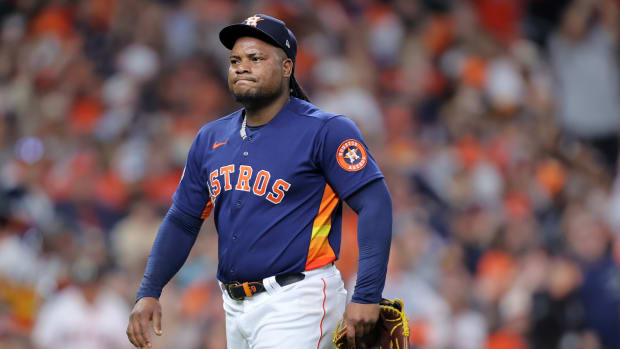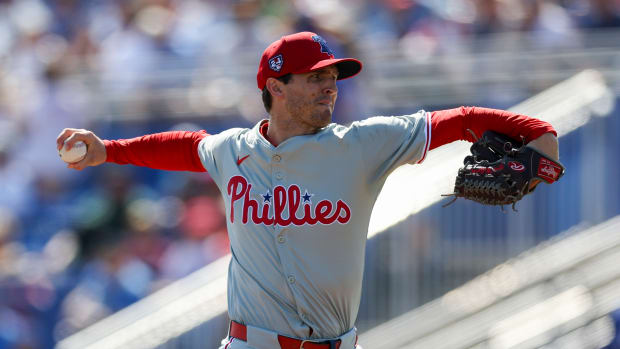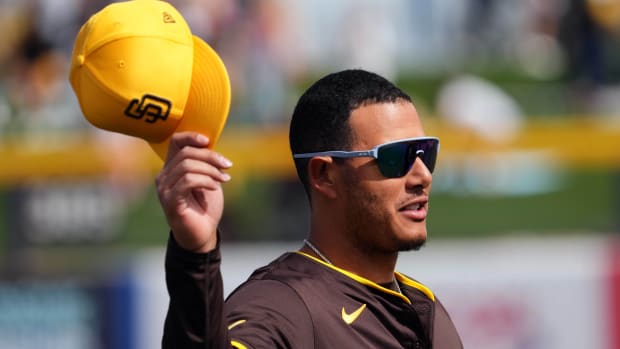How Corey Kluber transformed himself into Indians' unexpected ace
He is the stoic ace of the Cleveland Indians. He is a legitimate Cy Young candidate. He is that guy in your fantasy league you’re still kicking yourself for not drafting. He has the second-highest WAR of any pitcher in the majors, behind only Felix Hernandez, and ahead of such luminaries as Clayton Kershaw and David Price. He has more strikeouts than Max Scherzer, Yu Darvish and Jon Lester.
Today, Corey Kluber is 12-6 with a 2.55 ERA, making him arguably one of the top 10 starters in all of baseball. But three years ago, Corey Kluber was not even good enough to crack the Columbus Clippers’ playoff rotation.
Awards Watch: NL Cy Young race now between Kershaw, Cueto, Wainwright
"This is like the old Michael Jordan being left off his high school team story," said Indians minor league pitching coordinator Ruben Niebla, who was the Triple A pitching coach on the staff in Columbus that left Kluber out of its postseason rotation in 2011 even though he had started 27 games for the Clippers that season.
Who could blame them? Kluber, who had been drafted by San Diego in 2007, was by then a 25-year-old righthander with an erratic delivery and a fastball he couldn’t locate. He had come to the Indians' organization at the trade deadline in 2010 as part of a three-way deal with the Padres and Cardinals, but he was miserable in '11, with a 5.56 ERA in 150 2/3 innings. He had entered the season as Cleveland's 26th-best prospect, according to Baseball America, which wrote, "Kluber doesn’t have high upside, but he has good feel for pitching and could be a back-of-the-rotation starter." Even that temperate assessment was looking much too bullish.
That year, the Clippers went on to win the Governor's Cup as International League champions, and they did it with Kluber watching from the bench. "The three other guys [who were ahead of him in the Clippers' rotation] are no longer in professional baseball," Niebla said. "That puts into perspective just how far Corey has come."
So how did Kluber become one of the best pitchers in the majors? To answer the question, you have to go back to May 2012. Baseball is littered with tales of how a single bullpen session changed a pitcher’s fortunes — there’s the oft-told story of how Roy Halladay discovered a new fastball in a bullpen in Knoxville in 2001 — and for Kluber, everything changed one afternoon in Columbus.
A few days earlier, Kluber had been blasted in a start against the Yankees’ Triple A club, and he was working in the Clippers' indoor facility with Niebla and then-minor league pitching coordinator Mickey Callaway. During his bullpen session, Kluber was alternating between four-seamers that persistently stayed up and two-seamers that he was effectively locating down in the zone. "Let’s stick to the two-seamer,” one of the coaches said. Kluber did so, finishing the bullpen by throwing all two-seamers that he located on both sides of the plate, down in the zone, with the precision of a master pointillist.
Afterward, Kluber and his coaches had an idea for his next start in Syracuse: All his fastballs would be two-seamers. It was a radical move -- a pitcher at Kluber’s age ditching the four-seamer is not something you normally see. But the results were immediate. Kluber’s struggles had always stemmed from his inability to locate his fastball, but as Niebla recalled, 31 of Kluber's 34 fastballs against the Nationals' top farm team that day were strikes. He allowed just two earned runs over 6 2/3 innings, and eight of his next 10 starts were also quality; by August, he was in the Indians' rotation.
"Credit goes to Corey and his willingness to take a risk that a lot of guys wouldn’t be willing to take," Niebla said. "Someone at his age, in his career, it’s tough to be open to make changes. He was a fourth-rounder, he had shown ability, he had experienced some success. Usually, if you’re at that point in your career, by the time you get to Triple A, you’re just trying to polish your craft, mold what you have. He was willing to make changes, and it’s not easy for guys to make changes like that.
"The cutter and slider already showed signs of being quality major league pitches," said Niebla. "We always went back and forth in the minors about what the best combination was for him: Curveball-slider, slider-cutter, curveball-cutter? We obviously did not feel he needed three pitches going away from a righthanded hitter, but we did feel that he would be able to make whatever pitches he picked into major league weapons.
"Most pitchers command their fastball first, then develop their secondary pitches after that. Corey did it backwards," Niebla added. "He had his secondary pitches, but he needed to command his fastball."
Kluber’s two-seamer isn’t his nastiest pitch, but it is the pitch that sets up all his other weapons: the slider with the fiendishly-late movement; the cutter that slices in on lefties with three inches of horizontal movement; the underrated changeup that he uses primarily against lefties ("People don’t talk about this pitch," Niebla said, "but it’s really good").
And now Corey Kluber is in total control. "He’s an elite pitcher, no doubt," one scout said. "I put him as a top five starter [in the AL]. It’s fun watching him with two strikes on a guy, because you wonder what he’s going to throw. He just has so many options."
Felix Hernandez breaks a record, but Corey Kluber steals the show
On Monday, Kluber continued his dominance by allowing one run over 7 1/3 innings against the Reds — his 17-inning scoreless streak ended when reliever Nick Hagadone allowed a double after Kluber left the game in the eighth. Just a week earlier, Kluber had announced himself as one of the game’s elite starters when he outdueled Mariners ace Felix Hernandez in a brilliant three-hit, complete-game shutout of Seattle. And the man who helped remake him two years earlier was at home watching.
"It’s all coming together for him," Niebla said. "I truly believe Corey will continue to do this. There’s no reason why he can’t."






























